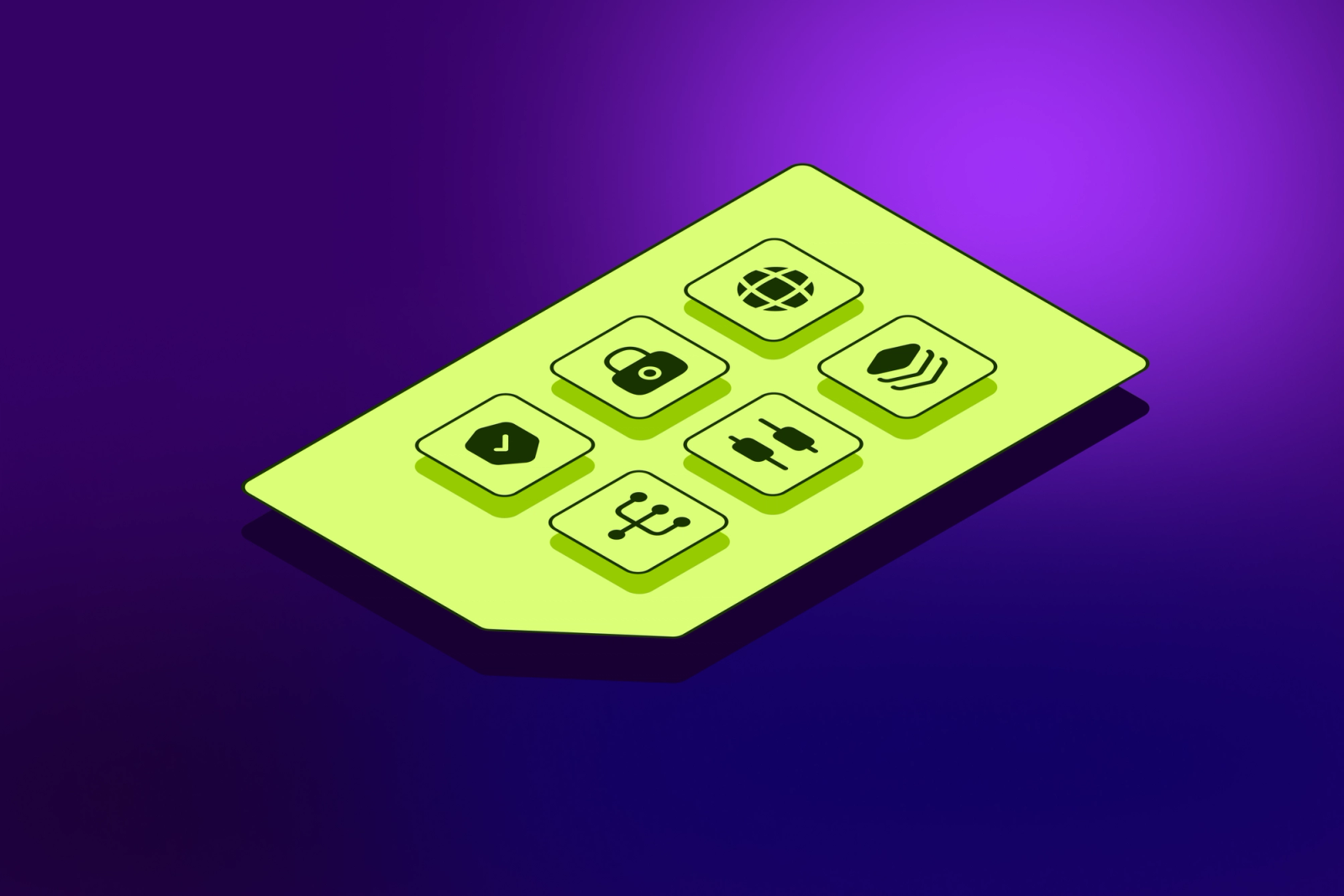Embracing the future: SGP.32 and what it means for your business

Upcoming GSMA SGP.32 standard is set to redefine the eSIM landscape, promising to enhance device interoperability and management on a global scale.
Cellular IoT continues to be a force for innovation across industries like manufacturing, smart farming, healthcare, and more. At the heart of these transformative connectivity solutions are powerful technologies, notably the Embedded Subscriber Identity Module (eSIM). In the realm of Machine-to-Machine (M2M) communications, eSIMs offer a robust solution for seamless connectivity management across global networks.
The upcoming GSMA SGP.32 standard is set to redefine the eSIM landscape, promising to enhance device interoperability and management on a global scale. In this blog, we’ll take a quick look at the evolution of eSIM technology and the benefits of SGP.32 for your cellular IoT connectivity solutions.
Setting the stage with eSIMs
Before we jump into SGP.32, let’s see how eSIMS revolutionized connectivity and why they are so valuable to businesses. The term eSIM is a bit confusing, as it describes two different things. It first emerged to refer to embedded, soldered SIMs. However, the ability to change connectivity parameters was limited due to that form factor. That set the stage for the Embedded Universal Integrated Circuit Card eUICC which virtualized the SIM into a profile. Now, eSIM refers to an eUICC that’s removable and reprogrammable with the ability to change profiles.
What are the benefits of using an eUICC SIM? It enables a business to:
- Use an embedded SIM and still have the ability to adapt connectivity
- Deploying to multiple regions where coverage requirements necessitate more than one profile to connect to
- Get the highest levels of reliability offered by Hologram’s new Dual-Core SIMs that offer DC a primary and backup profile on same SIM card
- Future proof a product where today one profile is sufficient works but tomorrow the profile moves or needs to be changed
What’s the value of SGP.32 for your business?
The cellular connectivity needed for eSIMs are built according to technical specifications. The upcoming SGP.32 standard represents a significant leap forward in eSIM technology, designed specifically to meet the sophisticated demands of modern IoT ecosystems. Its development is being guided by the collective insights of industry stakeholders, reflecting a broad spectrum of needs and challenges faced by IoT deployments.

With the upcoming SGP .31/.32 eSIM for IoT, the best of both worlds is on the horizon. Here are just a few of the benefits that the new SGP.32 will bring to the IoT ecosystem.
- Improved operational efficiency: SGP.32 aims to simplify the provisioning and management processes of IoT devices on a global scale. This includes streamlined management of network subscriptions, which can significantly reduce the operational overhead for IoT device manufacturers and service providers.
- Remote management: SGP.32 brings in remote management of profiles. SGP.02 (the M2M eSIM standard) already has this in what is referred to as Remote SIM Provisioning (RSP). SGP.22 (the consumer eSIM standard, does not support remote management of profiles, only local management. SGP.32 combines capabilities found in SGP.22 and SGP.02, into a new eSIM for IoT standard.
- Interoperability and flexibility: Interoperability remains a key challenge in the IoT space, with devices and systems often struggling to work seamlessly across different platforms and networks. SGP.02 (M2M eSIM) uses profile inventory on a server known as an SM-DP, whereas SGP.22 (consumer eSIM) introduced the concept of an SM-DP+, which is a more distributed way to manage profile inventory. SGP.32 combines SM-DP+ functionality with some of the benefits in SGP.02 needed for M2M/IoT products
When should you start getting ready for the full release of SGP.32?
The SGP.32 standard is still being brought to market, with its certification and general availability scheduled for 2025. For businesses and developers in the IoT sector, this is the perfect time to ensure that your connectivity goals align with the long-term vision for your product. This will help you decide if and when SPG.32 makes sense for your business. There may be features in the current industry standard that align with your business plans that might not yet be part of the upcoming .32 eSIMs
For instance, Hologram’s industry-first dual core SIMs offer two mobile cores on each SIM and fallback to a second backup core if the primary core fails and come with 99.95% uptime, contractually guaranteed. Many of our customers rely on that ability to have multiple active profiles and intelligent switching which is currently available on the M2M eSIM .02 standard.
We look forward to working with our customers to find the right solution to meet their connectivity goals today, and into the future.
Talk to an IoT Expert